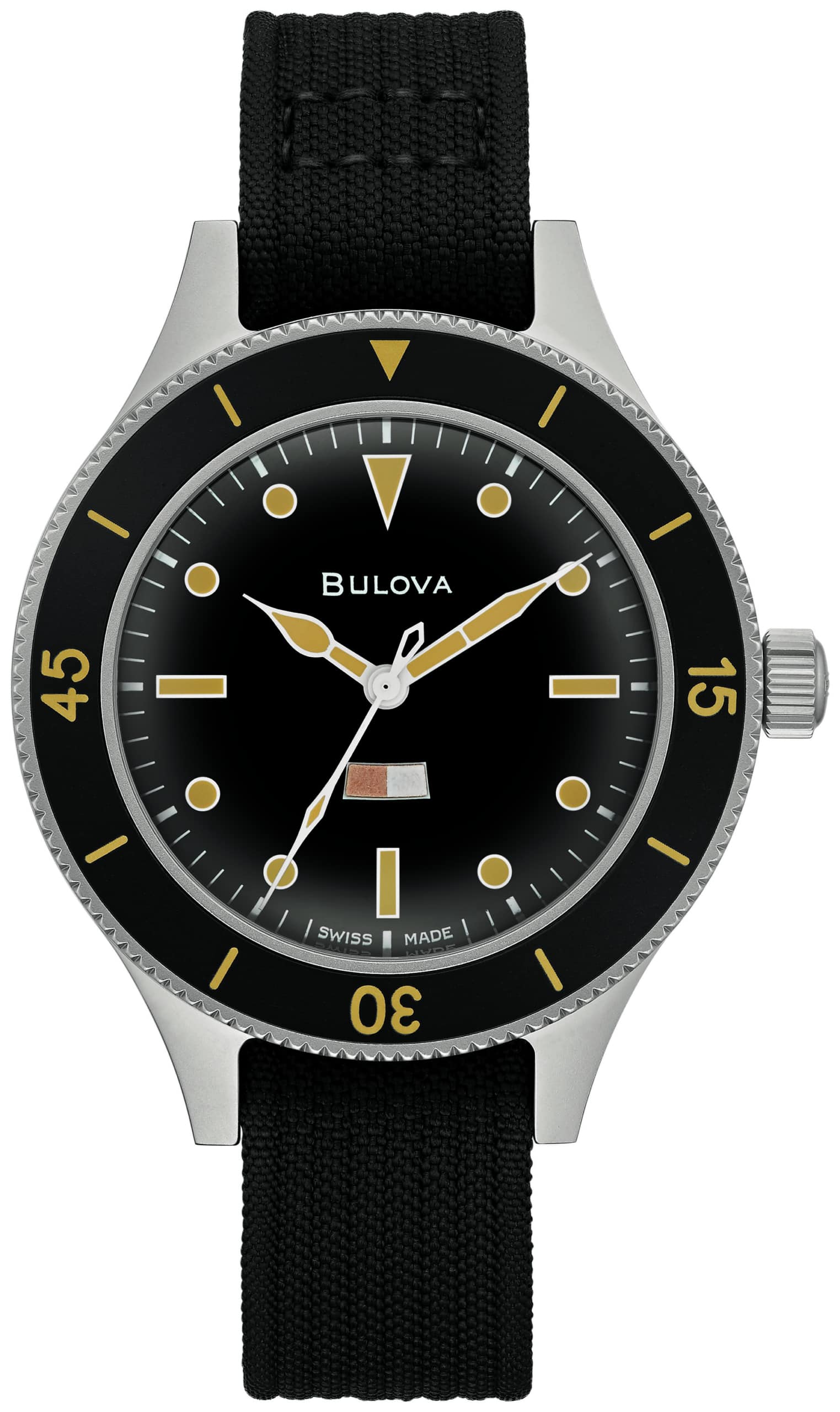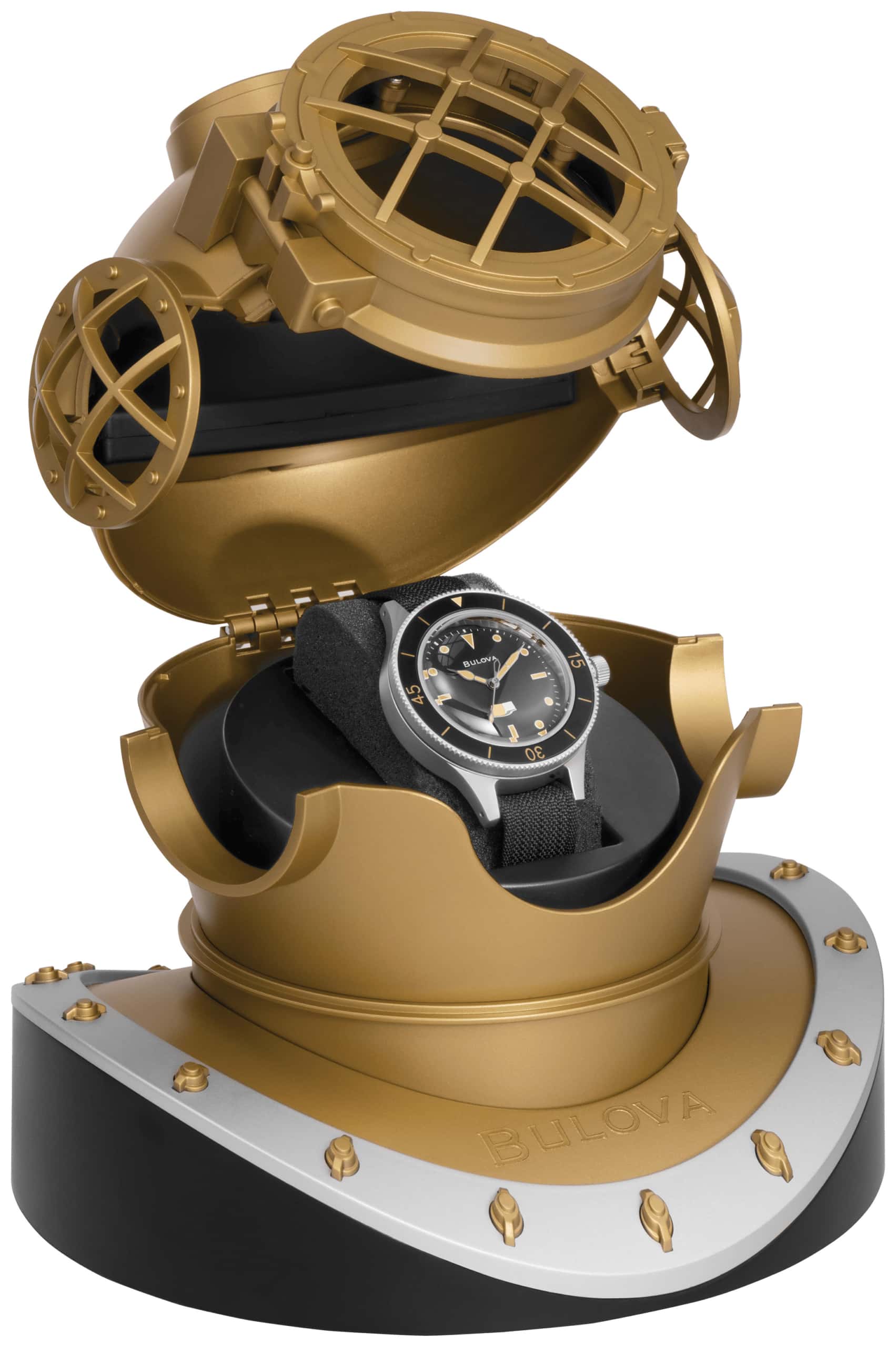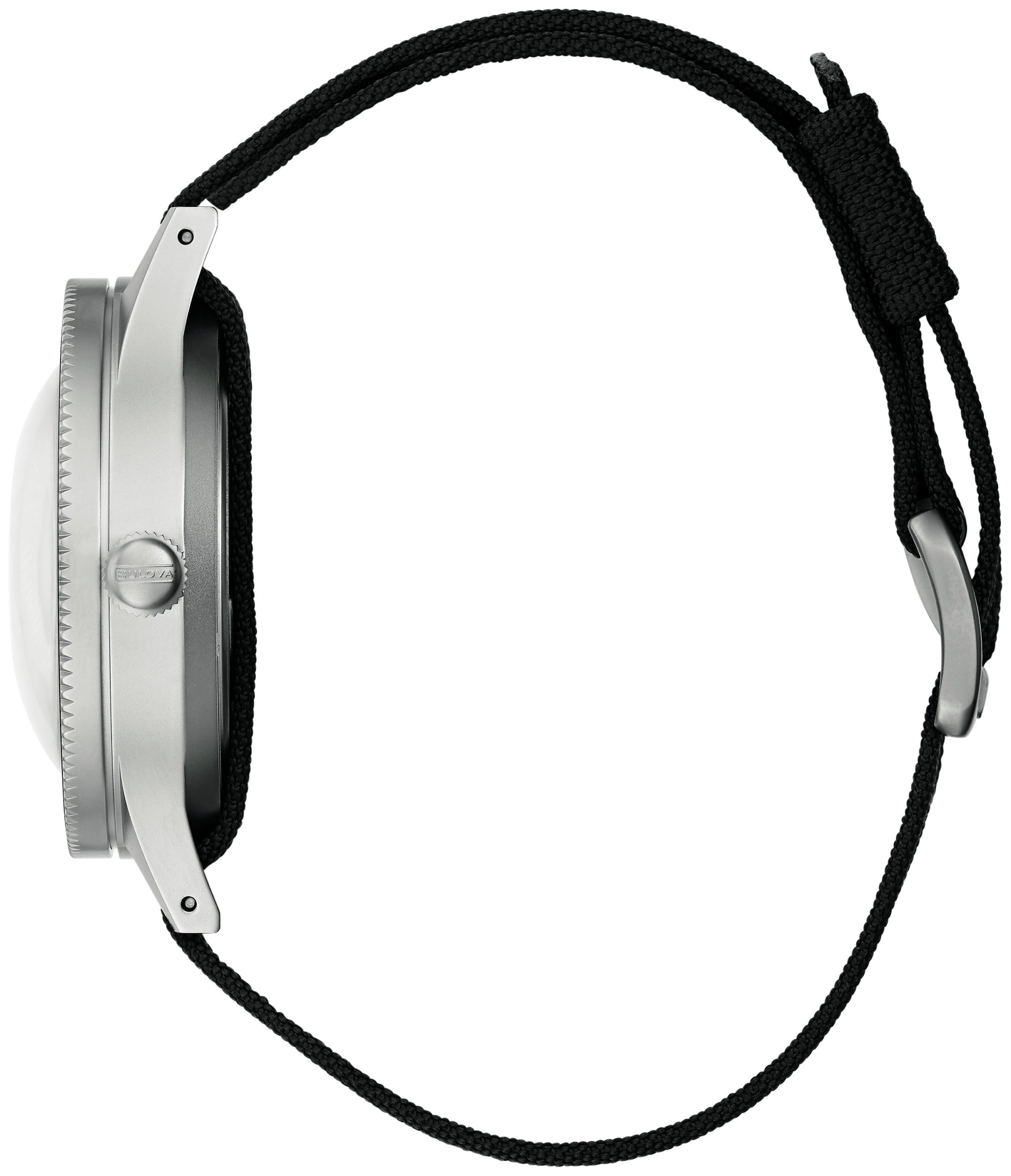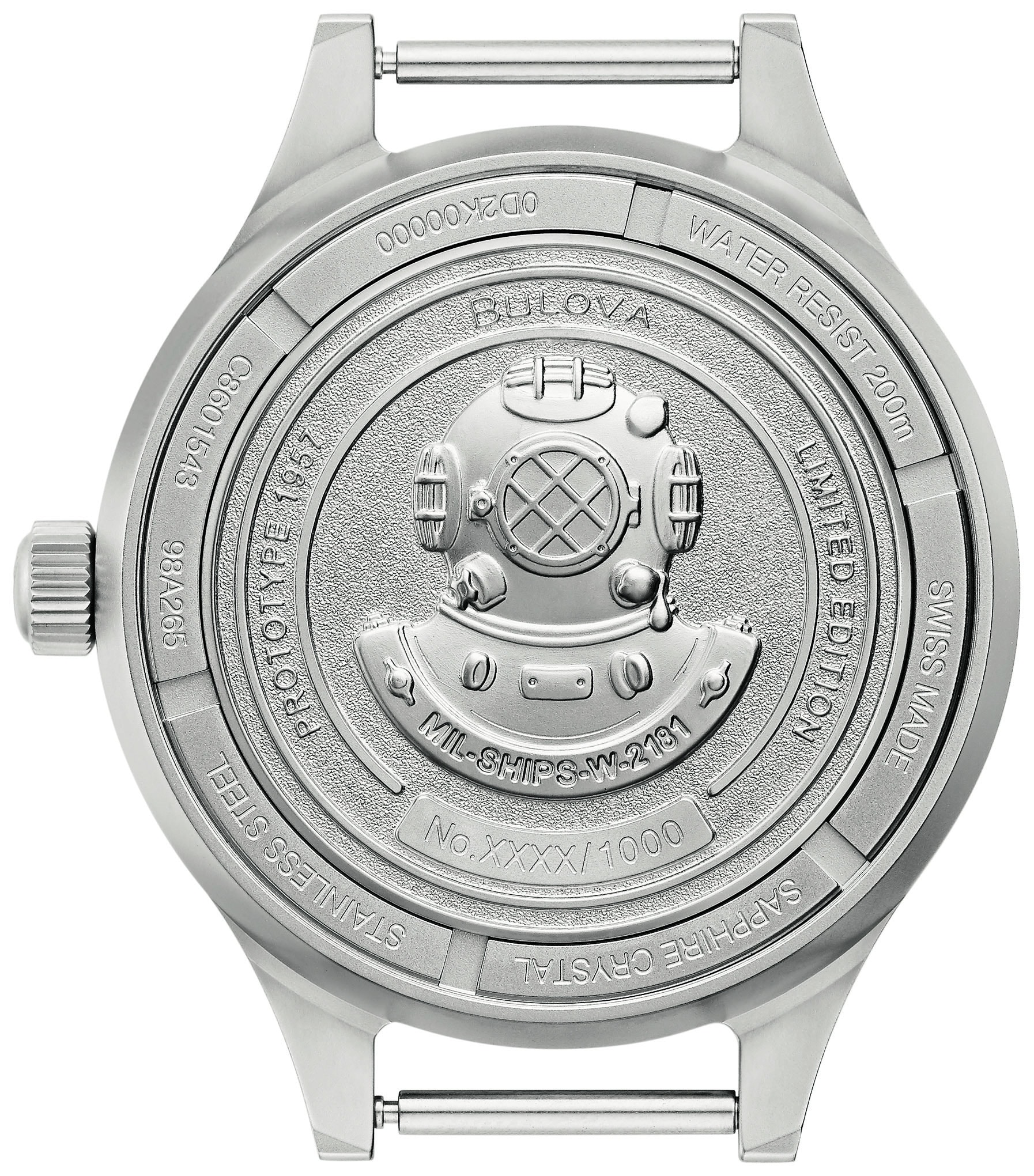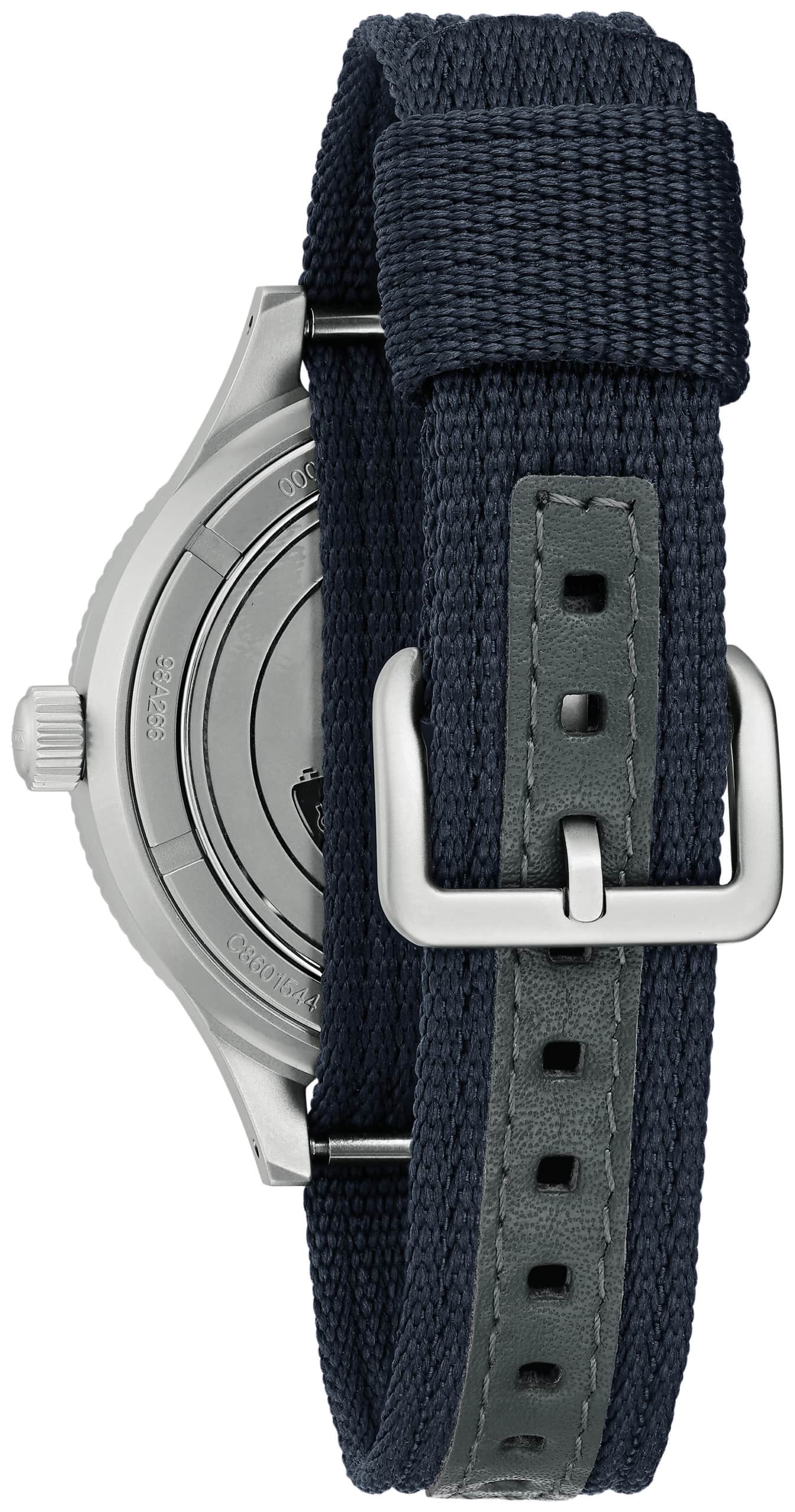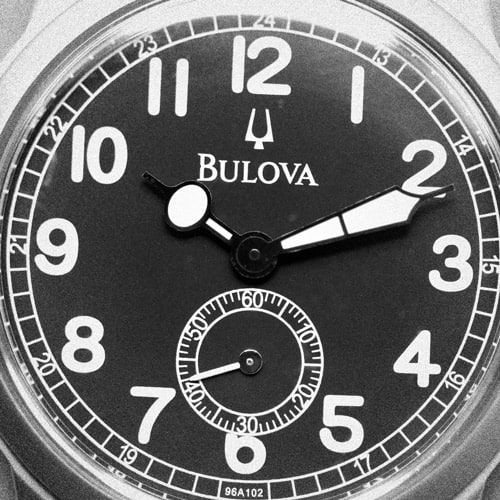The front of the case carries the bezel. It’s aluminium with SuperLuminova lume, which will be a great deal more robust than the original acrylic and a lot less likely to make you glow in the dark; the 1950s watch used radium. Unusually, rather than just giving the bezel a twist, you push this one in to unlock and then turn it, just like the original. Again, it’s a neat and different piece of engineering.
Then there’s the crystal. If it was any more domed you could probably set up home underneath it. It adds a huge amount of presence to the watch. Again, the domed crystal was a feature of the original MIL, but Bulova have ditched the original acrylic and gone for an updated sapphire.
![]()
You could probably publish some modern diving watch dials in paperback, there’s so much verbiage on them, but the MIL’s carries just three words; the maker’s name and the country of manufacture. The rest is pure clarity. The lume looks as though it’s just walked out of a 1950s bar, cigarette in hand, but it’s absolutely modern – SuperLuminova makes an ‘old radium’ shade that fits the MIL well. And, just like the original, the dial has a sensitive paper moisture tell-tale. This changes colour if the case is breached and moisture gets inside – so no need to wait for the whole thing to steam up, just check the tell-tale.
The limited edition watch arrives in a case styled to look similar to the caseback’s diving helmet whereas the ‘standard’ model comes in a neat box. The Sellita-powered watch has a black NATO, the Miyota a blue, slightly thinner strap.
If a watch like this floats your boat (sorry), getting your hands on an original prototype will require midnight negotiations at a crossroads with a bloke with horns and a tail – and even then we don’t fancy your chances. The ‘new’ MIL-SHIPS is a rather simpler way of doing it. The $895 and $1,990 are canny choices of price too. One for the serious milwatch/Bulova//vintage diver collectors and the other for enthusiasts who simply like the look of the watch and fancy something different. Bulova.









 Featured Videos
Featured Videos





